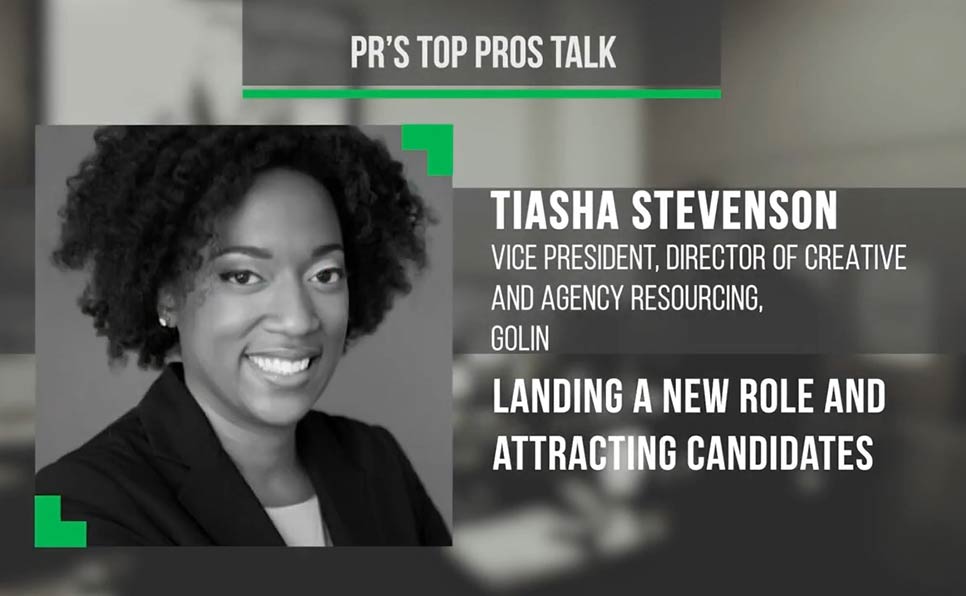Tiasha Stevenson, Vice President, Director of Creative and Agency Resources at Golin loves to connect people to new opportunities. She is fluent in how both employers and potential employees can ensure recruiting success. In her role at Golin, she works to uncover opportunities; recruit and retain top, diverse talent; and increase staff career development and satisfaction by streamlining creative and agency operations. Tiasha Stevenson provided tips for job hunters and recruiters in a recent “PR’s Top Pros Talk” video interview with CEO of D S Simon Media, Doug Simon. We share the interview with the link below.
For job hunters, she says, the first big step is self-exploration. Among the questions to ask yourself: “What do I like to do, what am I good at, and what will people pay me to do?”
Once they’ve answered those questions, job seekers should “start to put together a list or a Venn diagram and see if there are job descriptions encompassing these things. Then keep your eyes open for those types of opportunities.”
Looking for a new job does not necessarily mean leaving your present company in Stevenson’s view.
“Companies want to keep people in the company or in the network, and they want people who are happy. And so, I think it’s important to know what you want to do and then be honest with the team, talk to HR, talk to your manager, talk to people who do the job you think you want to do.”
And while a career path may require a transition to a new company, it does not mean burning bridges or slamming doors “when you communicate your work goals to others, you may have to leave the company, but it is possible to return in a new role”
She also says that sometimes job seekers have to take a role not just in seeking a new position, but in creating one. When Stevenson was job hunting herself, “I went through my resume and crossed out everything I didn’t want to be doing, and really had a resume that looked forward to what I wanted to do, and the team was open to speaking with me.”
When employers start a recruiting effort, Stevenson stresses the need to bring in existing employees to the conversation. “We’re looking for people who can bring something different to the table as well as learning the skillset with which we are already proficient.
Experience in working with diverse teams is another big plus. “We’re reaching out to an American population that’s more complex than ever before, so, it’s important to show that you can work on a team with people who are different from you.”
When you get the job, Stevenson advises pursuing a special strategy to ensure success. Now that the office water-cooler conversation is pretty much a thing of the past, she says that employees are finding new ways to familiarize themselves with a work environment. “At the height of the pandemic, there were happy hours happening on Zoom, and things like that can still happen.”
But whether employees meet up virtually or in person, she says it’s a good idea to leave some time “to just do the type of talking you would have done around bagels in the kitchen. We just have to take an extra step to build stronger relationships with our colleagues and co-workers.”
She also stresses the need for new employees to get know people from all parts of a company. “I think if you’re a manager of people, think about the functional parts of the job but then also take one additional step to think about what would make it better or how it would have looked if we were sitting together.”
Another key to creating connections, she says is “asking a lot of questions”—both about your new role in the company and the roles of the people you’re working with. “People get really jazzed when you’re finding out how they do their work and how their work connects to yours or connects to the company even if it doesn’t touch yours.”
It’s also important to make your unique communications style work for you in a new job environment. “I think there’s such an opportunity in our new ways of working to respect different communication styles and to really pull out the value that each person is bringing to the table.”

